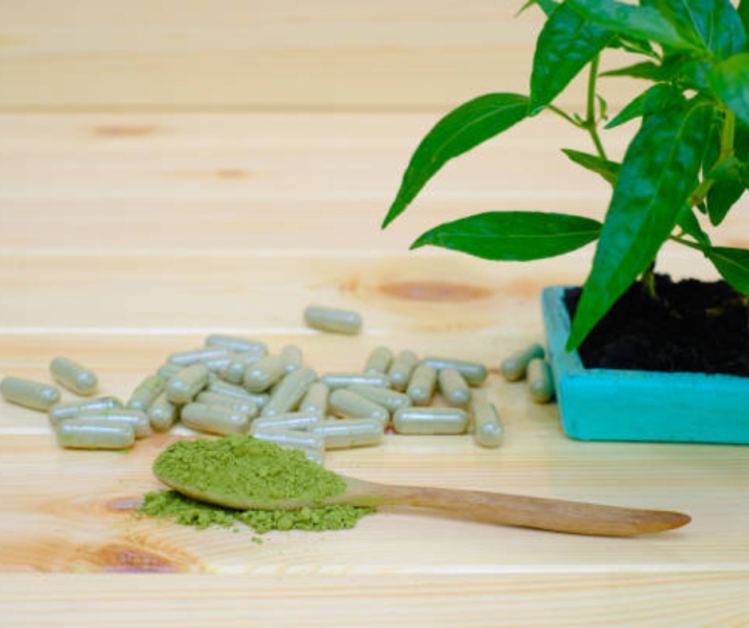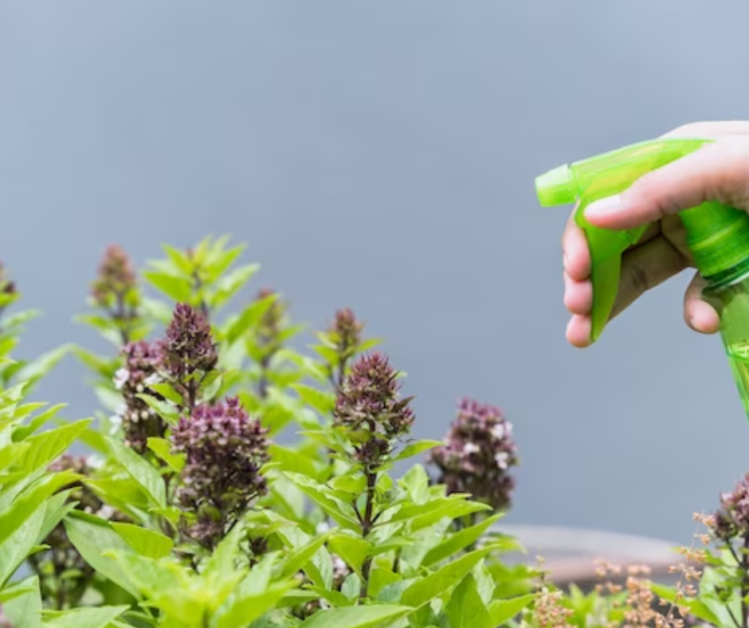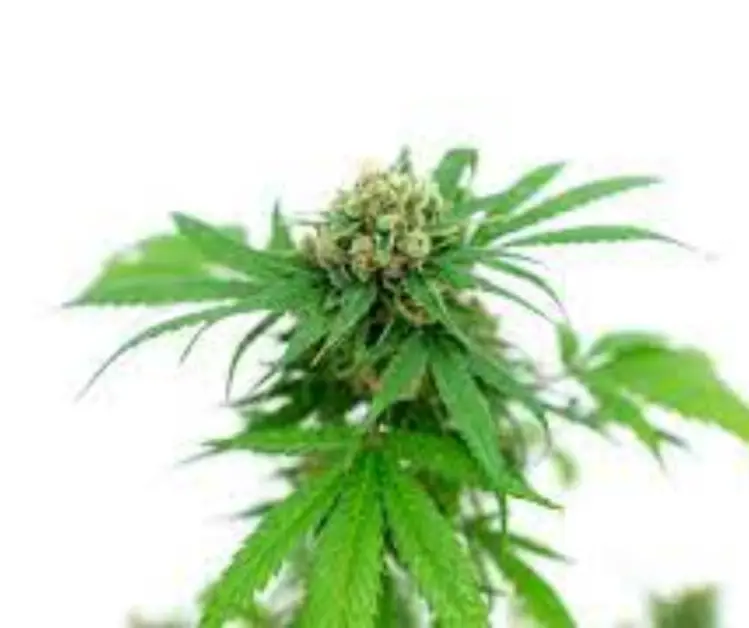How to Enhance Terpenes and Terpenoids: How to Boost the Flavor and Aroma of Your Buds with These Compounds
Table of Contents
Understanding the Importance of Terpenes and Terpenoids in Cannabis
Terpenes and terpenoids play a crucial role in the world of cannabis, contributing to the plant’s distinct flavor, aroma, and therapeutic properties. These organic compounds are found in abundance within the cannabis plant and are responsible for creating the diverse range of scents and tastes that enthusiasts have come to love.
Not only do terpenes and terpenoids enhance the overall sensory experience of consuming cannabis, but they also interact synergistically with cannabinoids, such as THC and CBD, to produce unique therapeutic effects. Research suggests that this entourage effect may enhance the potential benefits of cannabis, offering a more comprehensive and holistic approach to wellness. As we delve deeper into the world of cannabis, it becomes increasingly evident that understanding and appreciating the importance of terpenes and terpenoids is crucial for both cultivators and consumers alike.
Exploring the Natural Sources of Terpenes and Terpenoids
Terpenes and terpenoids are organic compounds that are responsible for the distinctive aroma and flavor profiles found in cannabis and other plants. These compounds are produced naturally by a wide variety of plant species, and they play important roles in the survival and reproductive strategies of these plants.
One of the primary natural sources of terpenes and terpenoids is the essential oils found in plants. These oils are secreted by specialized glands, such as trichomes, which are small hair-like structures on the surface of the plant. Trichomes serve a protective function, deterring pests and predators, and the production of terpenes and terpenoids is believed to be part of this defense mechanism.
Additionally, certain plant species have evolved to produce specific terpenes and terpenoids as attractants to pollinators. These compounds serve as chemical signals, luring in insects and animals that are critical for the plant’s reproduction. For example, the scent of flowers is often due to the presence of terpenes and terpenoids, enticing bees and other pollinators to visit and transfer pollen.
Understanding the natural sources of terpenes and terpenoids is crucial for cannabis enthusiasts and cultivators alike. By recognizing the diverse range of plant species that produce these compounds, we can gain insight into how these aromatic molecules have evolved and explore potential synergistic effects when consumed alongside cannabinoids in cannabis. So, let’s delve deeper into the subject and uncover the fascinating world of terpenes and terpenoids.

The Role of Terpenes and Terpenoids in Flavor and Aroma Profiles
Terpenes and terpenoids play a crucial role in the flavor and aroma profiles of cannabis. These organic compounds are responsible for the distinctive smells and tastes exhibited by different strains of cannabis.
The diverse range of terpenes found in cannabis contribute to its unique sensory experience. For example, the terpene limonene is associated with citrusy aromas, while myrcene is known for its musky scent. The combination of various terpenes in different quantities gives each cannabis strain its own distinct flavor and aroma profile.
Understanding and appreciating the role of terpenes and terpenoids in flavor and aroma profiles can significantly enhance the enjoyment of cannabis. Whether you are a connoisseur seeking specific sensory experiences or someone simply exploring the world of cannabis, paying attention to terpenes can open up a whole new dimension of appreciation for this remarkable plant. By recognizing and appreciating the impact of terpenes on flavor and aroma, cannabis enthusiasts can better understand and choose strains that align with their personal preferences and desired experiences. Terpenes truly enhance the sensory journey of cannabis consumption.
Factors That Influence Terpene and Terpenoid Content in Cannabis
Factors That Influence Terpene and Terpenoid Content in Cannabis
The terpene and terpenoid content in cannabis can vary greatly depending on several factors. One significant factor is the cannabis strain itself. Different strains of cannabis can have varying levels of terpenes and terpenoids, which contribute to their distinctive flavors and aromas. For example, the popular strain “Girl Scout Cookies” is known for its high terpene content, providing a sweet and earthy aroma.
Another factor that influences terpene and terpenoid content is environmental conditions. Temperature, humidity, and sunlight exposure can all impact the production of these compounds. Studies have shown that higher temperatures and increased humidity levels tend to result in higher concentrations of terpenes and terpenoids in cannabis plants. Conversely, prolonged exposure to intense sunlight can degrade these compounds, leading to decreased levels.
Additionally, cultivation practices play a significant role in determining terpene and terpenoid content. Factors such as nutrient levels in the soil, water quality, and the use of specific growing techniques can influence the production of these compounds. For instance, providing optimal nutrition and using hydroponic systems can enhance terpene and terpenoid synthesis in cannabis plants.
Understanding the various factors that influence terpene and terpenoid content in cannabis is crucial for growers and enthusiasts alike. By considering these factors, cultivators can maximize the production of these compounds and ultimately achieve the desired flavor and aroma profiles in their cannabis strains.
• Different strains of cannabis can have varying levels of terpenes and terpenoids
• Environmental conditions such as temperature, humidity, and sunlight exposure can impact terpene production
• Higher temperatures and increased humidity levels tend to result in higher concentrations of terpenes and terpenoids
• Prolonged exposure to intense sunlight can degrade these compounds, leading to decreased levels
• Cultivation practices such as nutrient levels in the soil, water quality, and growing techniques can influence terpene production
• Providing optimal nutrition and using hydroponic systems can enhance terpene synthesis
• Understanding these factors is crucial for growers to achieve desired flavor and aroma profiles.
Best Practices for Harvesting and Curing Cannabis to Preserve Terpenes
When it comes to harvesting and curing cannabis, preserving terpenes is a top priority for growers and enthusiasts. Terpenes are the aromatic compounds found in cannabis that contribute to its distinct flavor and aroma profiles. These compounds are sensitive to temperature, light, and humidity, and can easily degrade if not properly handled during the harvesting and curing process.
One of the best practices for preserving terpenes is to harvest cannabis plants at the optimal stage of maturity. This ensures that the terpene content is at its peak, maximizing the overall flavor and aroma of the final product. Careful observation of the trichomes on the buds, using a magnifying glass or microscope, can help determine the ideal time to harvest. Waiting for the trichomes to turn milky or amber in color indicates that the plant is at its prime for terpene preservation.
After harvesting, the next crucial step is the curing process. Curing involves drying the harvested buds in a controlled environment to remove moisture while allowing the terpenes to develop and mature. It is essential to maintain the right temperature and humidity levels during curing to prevent mold growth and preserve the terpenes. A temperature of around 60-70°F (15-21°C) and a humidity range of 45-55% are generally recommended for optimal terpene retention. With proper curing, the terpene profile of the cannabis can be enhanced, resulting in a more flavorful and aromatic product that is highly sought after by cannabis enthusiasts.
Techniques for Maximizing Terpene and Terpenoid Extraction during Extraction Processes
To maximize terpene and terpenoid extraction during extraction processes, there are several techniques that can be employed. One key method is utilizing low temperatures, as terpenes and terpenoids have volatile properties that can be easily lost at higher temperatures. By using a colder environment, such as a sub-zero freezer or dry ice, the extraction process can preserve the delicate aromas and flavors that terpenes and terpenoids contribute to cannabis.
Another technique is employing a method called “live resin” extraction. This process involves using fresh, uncured cannabis plants immediately after harvest. This allows for the highest concentration of terpenes and terpenoids to be captured, as they begin to degrade and evaporate as soon as the plant is cut. By utilizing live resin extraction, the end product will have a more potent and diverse terpene and terpenoid profile, resulting in a richer and more nuanced flavor and aroma experience.
Additionally, using advanced extraction methods, such as supercritical CO2 or hydrocarbon extraction, can also aid in maximizing terpene and terpenoid extraction. These techniques are highly efficient at separating and extracting the desired compounds from cannabis, ensuring a higher concentration of terpenes and terpenoids in the final product.
By employing these techniques, cannabis extractors can maximize the extraction of terpenes and terpenoids, resulting in products that showcase the full range of flavors and aromas that these compounds have to offer.

The Art of Blending Terpenes and Terpenoids for Customized Flavor Profiles
Blending terpenes and terpenoids allows for the creation of customized flavor profiles in cannabis products, enhancing the overall sensory experience for consumers. With a wide range of terpenes and terpenoids available, each offering unique aromatic and flavor characteristics, the art of blending becomes a crucial aspect of cannabis cultivation and product development.
By carefully selecting and combining different terpenes and terpenoids, growers and manufacturers can create a diverse range of flavor profiles that cater to specific consumer preferences. For instance, blending myrcene, which imparts a musky and earthy aroma, with limonene, known for its citrusy and uplifting scent, can produce a refreshing and energizing flavor profile. Similarly, the combination of pinene, with its pine-like aroma, and linalool, which offers floral and calming notes, can result in a soothing and relaxing flavor profile.
To ensure the desired flavor profiles are achieved, it is essential to understand the characteristics of individual terpenes and terpenoids, as well as their interactions when blended. Experimentation and precise measurements are key in determining the optimal ratios that result in a harmonious amalgamation of flavors. Additionally, considering other factors such as the strain of cannabis used, the cultivation environment, and the extraction methods employed can further enhance the flavor profile.
Overall, the art of blending terpenes and terpenoids offers endless possibilities for customization in cannabis products. As the industry continues to evolve, it is important for cultivators and manufacturers to stay informed about the latest research and developments in order to create unique and enticing flavor profiles that cater to the diverse tastes of consumers.
Enhancing Terpenes and Terpenoids through Proper Storage and Aging Techniques
When it comes to cannabis cultivation, proper storage and aging techniques are crucial for enhancing the terpenes and terpenoids in the plant. Terpenes are organic compounds responsible for the unique flavors and aromas found in cannabis, while terpenoids are the oxidized derivatives of terpenes. These compounds not only contribute to the sensory experience of consuming cannabis but also offer potential therapeutic benefits. By understanding how to store and age cannabis effectively, growers can preserve and enhance the terpene and terpenoid profiles of their plants, resulting in a more flavorful and potent end product.
One key factor in enhancing terpenes and terpenoids through storage and aging is maintaining the optimal temperature and humidity levels. High temperatures can cause the degradation of terpenes, while low humidity can lead to dry and brittle flowers, resulting in a loss of essential oils. In contrast, storing cannabis in a cool and dark environment with controlled humidity can slow down the degradation process and preserve the delicate terpene and terpenoid compounds. Additionally, aging cannabis can also help to enhance its terpene profiles. Through a process known as “curing,” the cannabis flowers are slowly dried and allowed to undergo a controlled breakdown of chlorophyll, resulting in a smoother smoke and the development of richer flavors and aromas.
In conclusion, proper storage and aging techniques play a critical role in enhancing the terpenes and terpenoids in cannabis. By maintaining the ideal temperature and humidity levels and allowing cannabis to undergo a controlled curing process, growers can preserve and amplify the unique flavors and aromas of their plants. These techniques not only contribute to a more enjoyable sensory experience but also have the potential to enhance the therapeutic benefits of cannabis products.
A table based on the above information:
| Storage and Aging Technique | Effect on Terpene and Terpenoid Stability |
|---|---|
| Low-stress training (LST) | Increases the exposure of the plant to light and air, which can stimulate the production of terpenes and terpenoids as a defense mechanism |
| Organic nutrients/amendments | Provides the essential elements and cofactors for the biosynthesis of terpenes and terpenoids, and avoids the accumulation of harmful chemicals that can degrade them |
| A good flush | Removes excess nutrients and salts from the plant tissues, which can improve the flavor and aroma of the terpenes and terpenoids |
| Environment controls | Maintains the optimal temperature, humidity, and light conditions for the preservation of terpenes and terpenoids, and prevents the growth of mold and bacteria that can degrade them |
| Harvest at the right time | Ensures the peak level of terpene and terpenoid content, which can vary depending on the strain and the desired effect |
| Drying and curing perfectly | Allows the gradual oxidation and conversion of terpenes and terpenoids into more complex and potent compounds, and enhances their flavor and aroma |
Understanding the Impact of Temperature and Humidity on Terpene and Terpenoid Preservation
Temperature and humidity play a crucial role in the preservation of terpenes and terpenoids in cannabis. These volatile compounds are highly susceptible to degradation under unfavorable environmental conditions, leading to a loss of flavor and aroma. Understanding the impact of temperature and humidity on terpene and terpenoid preservation is essential for cultivators and enthusiasts alike.
High temperatures can accelerate the degradation process of terpenes and terpenoids, causing them to evaporate more quickly. Conversely, low temperatures can help preserve these compounds by slowing down their degradation. It is important to note that different terpenes and terpenoids have varying temperature thresholds for degradation, so a nuanced understanding of each compound is necessary for optimal preservation.
Humidity levels also play a significant role in terpene and terpenoid preservation. High humidity can lead to moisture absorption by cannabis buds, which can promote the growth of mold and mildew and degrade the quality of the terpenes and terpenoids. On the other hand, low humidity can result in desiccation, causing the buds to lose moisture and potentially affecting the preservation of these compounds. Striking the right balance is crucial to maintaining the integrity of the terpenes and terpenoids in cannabis.
To ensure the preservation of these valuable compounds, it is recommended to store cannabis in a cool and dry environment with controlled temperatures and humidity levels. Airtight containers, such as glass jars, can help maintain the freshness and quality of terpenes and terpenoids. Additionally, monitoring and controlling temperature and humidity levels during the harvesting, drying, and curing processes can significantly contribute to the preservation of these compounds.
In conclusion, temperature and humidity play a pivotal role in preserving the terpenes and terpenoids in cannabis. Proper storage and environmental conditions are essential for maintaining the flavor and aroma profiles of cannabis products. By understanding the impact of temperature and humidity on terpene and terpenoid preservation, cultivators and enthusiasts can ensure the optimal quality of their cannabis.
The Effects of Light Exposure on Terpene and Terpenoid Stability
Light exposure has a significant impact on the stability of terpenes and terpenoids in cannabis. When cannabis is exposed to light, especially ultraviolet (UV) light, it can cause the degradation and breakdown of these aromatic compounds. This can result in a loss of flavor, aroma, and therapeutic benefits in cannabis products.
Research has shown that prolonged exposure to light can lead to a decrease in terpene and terpenoid content. One study found that after just a few days of UV light exposure, the concentration of certain terpenes, such as myrcene and limonene, decreased significantly. Another study found that light exposure can also lead to the formation of new compounds, such as oxygenated derivatives, which can alter the flavor and aroma profiles of cannabis.
To preserve the stability of terpenes and terpenoids, it is crucial to store cannabis in a dark and cool environment. Using opaque containers or UV-resistant packaging can help protect the aromatic compounds from light damage. Additionally, minimizing the amount of time cannabis is exposed to light during processing and storage can further help preserve the integrity of these valuable compounds.
By understanding the effects of light exposure on terpene and terpenoid stability, cannabis cultivators and manufacturers can take proactive steps to ensure the quality and potency of their products. Through careful handling, storage, and protection from light, the full potential of these aromatic compounds can be harnessed, providing consumers with cannabis products that deliver optimal flavor, aroma, and therapeutic benefits.
Stay tuned for the next section of this article, where we will delve into the synergistic effects of cannabinoids and terpenes in cannabis, and how they work together to enhance the overall experience and medicinal properties of the plant.
The following table shows the effect on terpene and Terpenoid:
| Light Quality | Light Intensity | Effect on Terpene and Terpenoid Biosynthesis |
|---|---|---|
| Red and far-red light | High | Stimulates the expression of genes involved in phenolics, terpenoids, and alkaloids biosynthesis |
| Blue/UV-A light | High | Activates cryptochromes and regulates PIFs, which modulate the expression of light-responsive genes |
| UV-B light | Low to moderate | Induces the production of terpenoids and other SM as a defense mechanism against UV-B stress |
| Artificial light sources | Variable | Can elicit SM production by mimicking natural light conditions or creating novel light environments |
Exploring the Synergistic Effects of Cannabinoids and Terpenes in Cannabis
Cannabinoids and terpenes are two crucial compounds found in cannabis that work together to produce a variety of effects. Research has shown that cannabinoids, such as THC and CBD, can interact with terpenes to enhance their therapeutic properties. This phenomenon, known as the entourage effect, suggests that the combination of cannabinoids and terpenes may produce greater therapeutic benefits than when used in isolation.
For example, one study published in the Journal of Pharmacology and Experimental Therapeutics found that specific terpenes, such as myrcene and β-caryophyllene, can enhance the anti-inflammatory effects of CBD. Another study published in the British Journal of Pharmacology demonstrated how a combination of THC and the terpene limonene can potentially help alleviate symptoms of anxiety and depression.
The synergistic effects between cannabinoids and terpenes extend beyond therapeutic benefits. Terpenes also play a crucial role in shaping the flavor and aroma profiles of different cannabis strains. These aromatic compounds contribute to the unique sensory experience of consuming cannabis, providing distinct notes of citrus, pine, lavender, and many others.
Understanding the synergistic effects of cannabinoids and terpenes is essential for both medical cannabis patients and recreational users. By exploring these interactions, we can unlock the full potential of cannabis and tailor its effects to individual preferences and needs. With further research and advancements in our knowledge of these compounds, we can expect to see even more exciting developments in the cultivation and consumption of cannabis.
Utilizing Terpenes and Terpenoids for Therapeutic Benefits in Cannabis Products
As the research into cannabis continues to evolve, scientists and medical professionals are uncovering the potential therapeutic benefits of terpenes and terpenoids in cannabis products. Terpenes and terpenoids are aromatic compounds found in various plant species, including cannabis, that not only contribute to the aroma and flavor profiles of cannabis, but also have potential health benefits.
One way in which terpenes and terpenoids can be utilized for therapeutic benefits in cannabis products is through their interaction with the endocannabinoid system (ECS) in the human body. The ECS is a complex network of receptors, enzymes, and endocannabinoids that plays a crucial role in regulating various physiological processes, such as pain sensation, immune response, and mood. Terpenes and terpenoids have been found to interact with the ECS, either by modulating the activity of the receptors or by influencing the production and degradation of endocannabinoids.
For example, studies have shown that certain terpenes, such as beta-caryophyllene and limonene, have anti-inflammatory properties and can potentially alleviate symptoms associated with chronic pain and inflammation. Other terpenes, such as linalool and myrcene, have been found to have relaxing and sedative effects, making them suitable for promoting sleep and reducing anxiety. These therapeutic benefits, when combined with the various cannabinoids found in cannabis, create a synergistic effect known as the “entourage effect,” where the combined compounds work together to produce enhanced therapeutic outcomes.
While more research is needed to fully understand the specific mechanisms and potential therapeutic benefits of terpenes and terpenoids in cannabis, their potential is promising. As the cannabis industry continues to grow, it is important for manufacturers and consumers to recognize the role that terpenes and terpenoids play in enhancing the therapeutic potential of cannabis products. By utilizing these compounds in a thoughtful and targeted manner, manufacturers can create products that cater to specific medical conditions or desired effects, while consumers can benefit from a more personalized and effective cannabis experience.

The Future of Terpenes and Terpenoids in Cannabis Cultivation and Consumption
As the cannabis industry continues to flourish and evolve, the future of terpenes and terpenoids in cultivation and consumption holds great promise. These aromatic compounds, found abundantly in various plants, are gaining recognition for their potential therapeutic benefits and role in enhancing the overall cannabis experience. With ongoing research and innovation, it is clear that terpenes and terpenoids will play a crucial role in shaping the future of cannabis cultivation and consumption.
In the realm of cultivation, genetic advancements and breeding techniques are being explored to develop cannabis strains with higher terpene and terpenoid content. This opens up a world of possibilities for growers and cultivators, as they can tailor the aroma, flavor, and effects of different strains to meet the diverse preferences of consumers. By understanding the intricate relationship between genetics, cultivation techniques, and terpene profiles, cultivators can optimize their processes to consistently produce high-quality cannabis with distinct and desirable terpene profiles.
Furthermore, the future of terpenes and terpenoids in cannabis consumption is not limited to smoking or vaporizing. As the cannabis industry expands, more innovative products are being developed, including terpene-infused concentrates, edibles, beverages, and topicals. These products offer consumers a wider range of choices and experiences, allowing them to explore the nuances of different terpene profiles and discover their preferred combination of flavor, aroma, and effects.
In conclusion, the future of terpenes and terpenoids in cannabis cultivation and consumption is bright. With advancements in cultivation techniques, breeding strategies, and product development, the cannabis industry continues to unlock the potential of these aromatic compounds. As consumers become increasingly educated and discerning, the demand for cannabis products with specific terpene profiles will likely soar. By harnessing the power of terpenes and terpenoids, the cannabis industry can deliver a more personalized and enjoyable experience for enthusiasts worldwide. The possibilities are vast, and it will be intriguing to witness the continued evolution of terpenes and terpenoids in the cannabis
The following link shows a video regarding the topic
What are terpenes and terpenoids?
Terpenes and terpenoids are organic compounds found in cannabis and other plants that contribute to the plant’s aroma and flavor profiles. They are also believed to play a role in the therapeutic effects of cannabis.
How do terpenes and terpenoids affect the flavor and aroma of cannabis?
Terpenes and terpenoids are responsible for the distinctive smells and tastes associated with different cannabis strains. They can contribute notes of citrus, pine, mint, and many other flavors and aromas.
Are terpenes and terpenoids only found in cannabis?
No, terpenes and terpenoids are found in a wide variety of plants, including fruits, herbs, and flowers. Cannabis plants contain a diverse array of these compounds, which contribute to the plant’s unique characteristics.
Can terpenes and terpenoids be altered during the cultivation process?
Yes, various factors such as genetics, cultivation practices, and environmental conditions can influence the terpene and terpenoid content in cannabis. Proper cultivation techniques can help preserve and enhance these compounds.
How can terpenes and terpenoids be preserved during cannabis harvesting and curing?
Best practices for preserving terpenes during harvest and curing include drying cannabis slowly and at a low temperature, avoiding excessive handling, and storing the cured cannabis in airtight containers.
Are there techniques to maximize terpene and terpenoid extraction during extraction processes?
Yes, techniques such as using cold extraction methods, choosing solvents that preserve terpenes, and optimizing extraction parameters can help maximize the extraction of terpenes and terpenoids from cannabis.
Can terpenes and terpenoids be blended to create customized flavor profiles?
Yes, terpenes and terpenoids can be blended in different combinations to create customized flavor profiles in cannabis products. This allows for the creation of unique and tailored experiences for consumers.
How can terpenes and terpenoids be enhanced through proper storage and aging techniques?
Proper storage and aging techniques, such as storing cannabis in a cool and dark environment, can help preserve and enhance the terpene and terpenoid content over time.
What impact does temperature and humidity have on the preservation of terpenes and terpenoids?
Temperature and humidity can significantly impact the preservation of terpenes and terpenoids. Higher temperatures and excessive humidity can cause degradation and loss of these compounds.
How does light exposure affect the stability of terpenes and terpenoids?
Light exposure can degrade terpenes and terpenoids over time. It is important to store cannabis products in opaque containers to protect them from light and preserve the stability of these compounds.
What are the synergistic effects of cannabinoids and terpenes in cannabis?
Cannabinoids and terpenes are believed to work together in what is called the “entourage effect,” where the combination of various compounds enhances the overall therapeutic effects of cannabis.
Can terpenes and terpenoids be utilized for therapeutic benefits in cannabis products?
Yes, terpenes and terpenoids have been found to have potential therapeutic benefits, including anti-inflammatory, analgesic, and anti-anxiety properties. They can be utilized in cannabis products to enhance their therapeutic potential.
What does the future hold for terpenes and terpenoids in cannabis cultivation and consumption?
The future of terpenes and terpenoids in cannabis cultivation and consumption looks promising. As research and understanding of these compounds continue to grow, we can expect advances in cultivation techniques, extraction methods, and product development to maximize their benefits.







